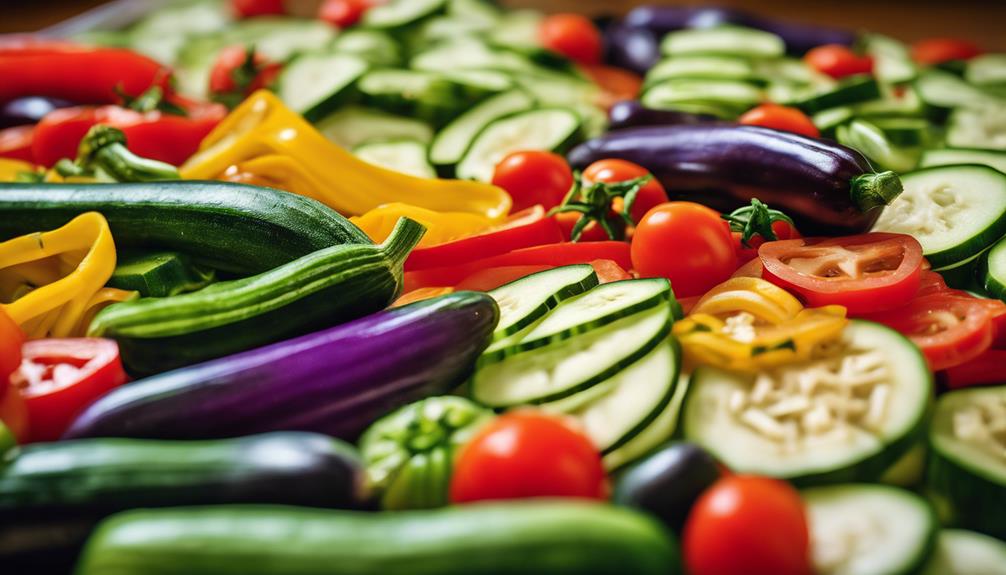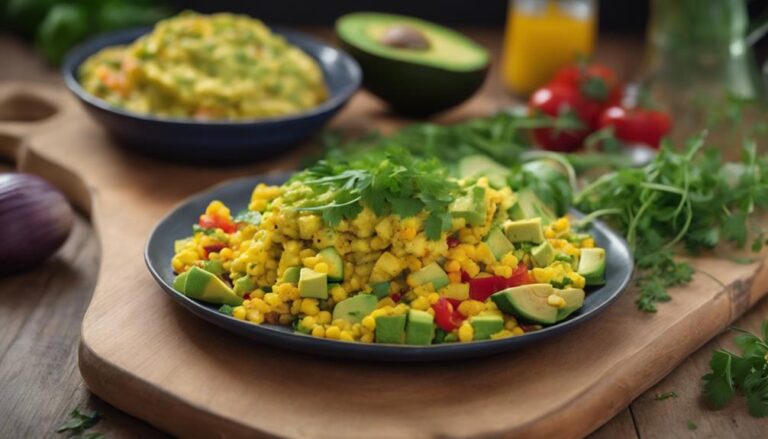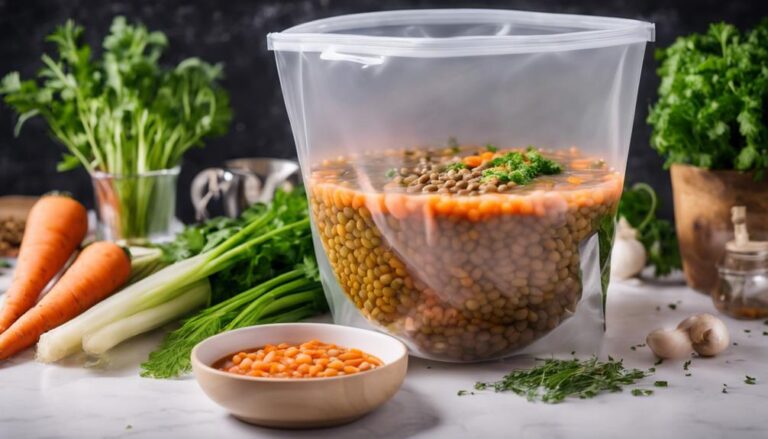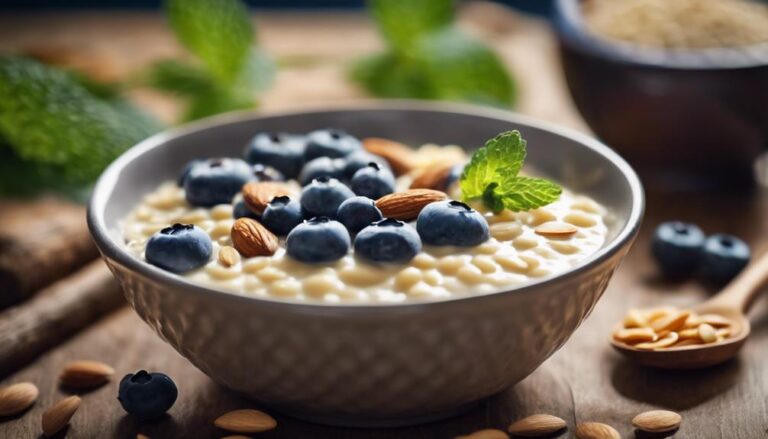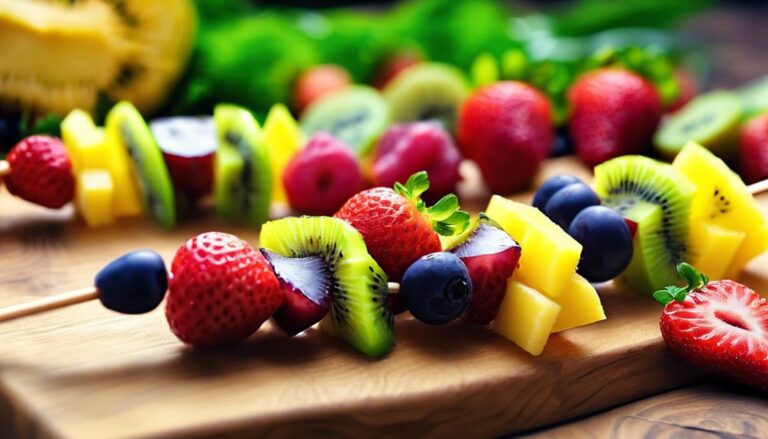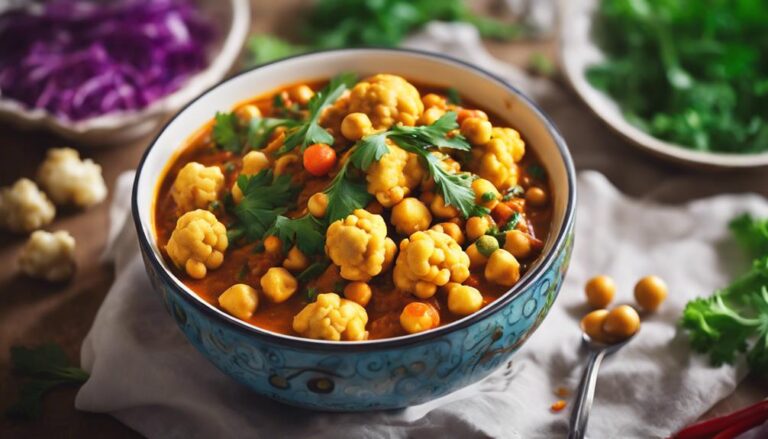Sous Vide Ratatouille: A Classic Daniel Fast Dinner
Looking for a delicious Daniel Fast dinner? Try sous vide ratatouille. Originating from France, this dish combines eggplant, zucchini, bell peppers, tomatoes, and onions, each adding unique flavors. Chefs worldwide offer variations like eggplant and zucchini medley or mushroom and bell pepper mix with sun-dried tomatoes and feta cheese for a twist. Sous vide cooking guarantees precise temperatures and flavor retention. Ratatouille's melded flavors, comfort, and nutrition make it versatile for various meals. Enhance it with herbs, spices, or proteins. Get ready to savor a classic dinner on your Daniel Fast journey.
What You Will Learn Here
- Sous vide ratatouille offers enhanced flavors and textures with precise cooking control.
- Incorporating traditional ratatouille ingredients like eggplant, zucchini, peppers, and tomatoes aligns with the Daniel Fast guidelines.
- The sous vide technique retains nutrients and flavors, making it suitable for a health-conscious Daniel Fast meal.
- Experiment with herbs, spices, and additional vegetables to customize the ratatouille while staying true to the Daniel Fast principles.
- Enjoy a classic and nutritious Daniel Fast dinner with sous vide ratatouille, combining tradition with modern cooking techniques.
Origins of Ratatouille

Ratatouille, a classic French dish, has a rich culinary history worth exploring. Its traditional recipe typically includes a medley of fresh vegetables like tomatoes, zucchini, and eggplant.
However, modern chefs have put unique twists on this dish, creating variations that cater to different tastes and dietary preferences.
Ratatouille's French Origins
French culinary history traces the origins of Ratatouille back to the Provence region. This dish, beloved for its vibrant flavors and colorful presentation, is a product of Mediterranean fusion, blending the fresh produce and aromatic herbs typical of Southern French cuisine. Ratatouille embodies the essence of French culinary traditions, showcasing the art of transforming simple ingredients into a harmonious and satisfying dish.
Originating in the 18th century, Ratatouille was initially a humble peasant dish, reflecting the resourcefulness of Provencal cooks who utilized an abundance of seasonal vegetables. The name itself is derived from the Occitan word 'ratatolha,' which means to stir up or mix. This cooking method involves slow-cooking vegetables like tomatoes, zucchini, eggplant, bell peppers, and onions with olive oil and herbs such as thyme and basil.
As you prepare Ratatouille, remember that you aren't just making a meal but also honoring a rich culinary heritage that celebrates the beauty of simple, wholesome ingredients coming together in perfect harmony.
Traditional Ingredients Used
Originating in the Provence region of France, the traditional ingredients used in Ratatouille reflect the essence of Mediterranean fusion cuisine. Ratatouille is a delightful dish that brings together the vibrant flavors of seasonal vegetables like eggplant, zucchini, bell peppers, tomatoes, and onions. Each ingredient plays an essential role in the dish, contributing to its rich taste and colorful appearance.
In the traditional preparation of Ratatouille, these seasonal vegetables are carefully sliced and then cooked slowly to allow their flavors to meld together harmoniously. The eggplant adds a creamy texture, the zucchini brings a subtle sweetness, while the bell peppers offer a hint of smokiness. The tomatoes provide a bright acidity, and the onions tie everything together with their savory depth.
When you prepare Ratatouille with these traditional ingredients, you aren't only creating a delicious meal but also honoring the culinary heritage of the Provence region. The combination of these simple yet flavorful components showcases the beauty of using fresh, seasonal produce in Mediterranean cooking.
Modern Ratatouille Variations
With contemporary culinary creativity flourishing, chefs worldwide have reimagined the traditional Ratatouille recipe in various innovative ways. One modern take on this classic dish involves transforming the traditional vegetable medley into a more visually appealing and refined version. Culinary trends have seen chefs carefully layering thinly sliced vegetables like zucchini, eggplant, and tomatoes in intricate patterns, creating stunning presentations that elevate the dish to a work of art.
In addition to the visual transformation, modern Ratatouille variations also explore new flavor profiles by incorporating exotic herbs, spices, and ingredients not typically found in the traditional recipe. Chefs experiment with different cooking techniques, such as roasting, grilling, or even dehydrating the vegetables before assembling them into a deconstructed masterpiece.
These contemporary interpretations of Ratatouille showcase the versatility of this beloved dish, appealing to a new generation of food enthusiasts who seek both creativity and tradition on their plates. Embracing innovation while honoring the roots of classic French cuisine, these modern variations breathe new life into a timeless recipe.
Key Ratatouille Ingredients
Enhance your ratatouille with a medley of fresh vegetables like eggplant, zucchini, bell peppers, and tomatoes. These key ingredients form the heart of this classic dish, offering a burst of flavors and colors that will delight your taste buds.
Here are some essential components to create a delicious ratatouille:
- Eggplant: Adds a rich, meaty texture to the dish, absorbing the flavors of the other vegetables.
- Zucchini: Provides a subtle sweetness and a tender bite, balancing out the savory elements.
- Bell Peppers: Offer a vibrant pop of color and a slightly sweet taste that complements the overall dish.
- Tomatoes: Bring a juicy freshness and a tangy acidity that ties all the flavors together beautifully.
When preparing your ratatouille, remember to slice the vegetables uniformly for even cooking and consider layering them for a visually appealing presentation.
These ingredients, when combined with the right techniques, will elevate your ratatouille to a delightful culinary experience.
Top-Rated Ratatouille Variations
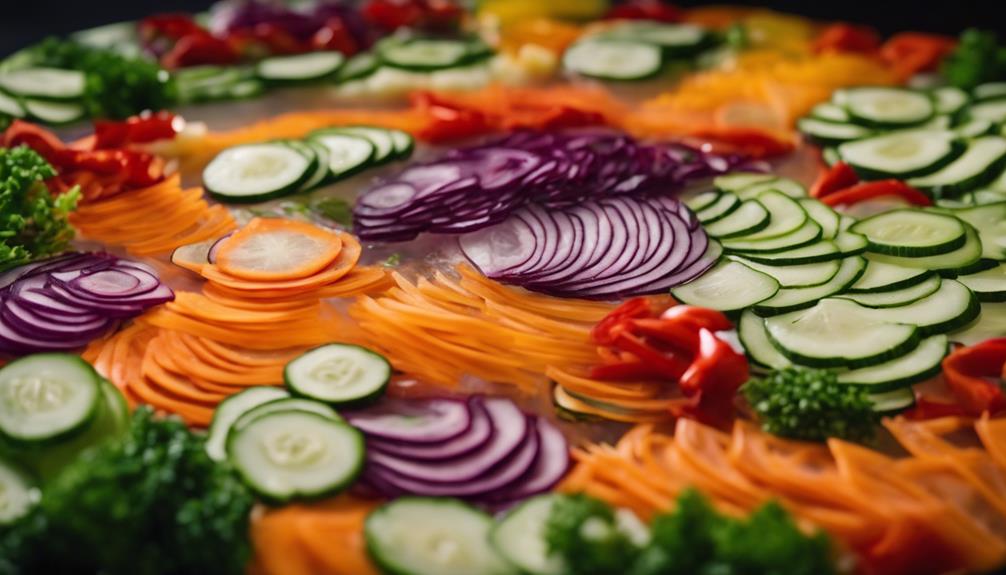
Let's explore some top-rated variations of ratatouille to add a unique twist to your cooking repertoire.
Consider trying an eggplant and zucchini medley for a delightful combination of flavors and textures.
Alternatively, a mushroom and bell pepper medley can bring a savory depth to this classic dish.
Unique Ratatouille Twist
For a unique twist on traditional ratatouille, consider incorporating unexpected ingredients like capers or olives. These additions can elevate the dish and create a flavorful combination that surprises and delights your taste buds.
Here are four creative ways to add a twist to your ratatouille:
- Sun-Dried Tomatoes: Introduce a sweet and tangy flavor to your ratatouille by adding chopped sun-dried tomatoes.
- Fresh Herbs: Enhance the dish's aroma and taste by sprinkling fresh basil, thyme, or parsley before serving.
- Pine Nuts: For a delightful crunch, sprinkle some toasted pine nuts over your ratatouille just before serving.
- Feta Cheese: Crumble some feta cheese on top of the ratatouille to add a creamy texture and salty kick.
These unique additions can take your ratatouille to the next level, providing a delightful twist on the classic dish while still maintaining its comforting and hearty essence.
Eggplant and Zucchini Medley
Consider exploring a delightful combination of eggplant and zucchini in your ratatouille to create a top-rated variation that will surely impress your taste buds.
When incorporating this vegetable medley into your dish, you can elevate the flavors by applying a roasting technique that enhances the natural sweetness of the ingredients and guarantees peak flavor preservation.
Here are some tips to guide you in preparing this seasonal produce:
- Selecting the Best Produce: Choose firm and glossy eggplants and zucchinis to ensure freshness and peak taste.
- Preparation Matters: Slice the vegetables uniformly for even cooking and a visually appealing presentation.
- Seasoning with Care: Use a blend of herbs and spices to complement the earthy flavors of the eggplant and zucchini.
- Timing is Key: Monitor the roasting process closely to achieve a perfect balance of tenderness and slight caramelization.
Mushroom and Bell Pepper Medley
Enhance your ratatouille with a flavorful Mushroom and Bell Pepper Medley that adds depth and richness to your dish. This medley complements the classic flavors of ratatouille, elevating your dining experience.
Here are some enticing ways to enhance your dish:
- Grilled Vegetable Infusion: Incorporate a variety of grilled vegetables like zucchini, eggplant, and onions to enhance the medley's smoky essence.
- Marinara Sauce Drizzle: Add a generous drizzle of marinara sauce over the medley to infuse it with a burst of tangy tomato goodness.
- Roasted Garlic Accent: Roasted garlic cloves mixed into the medley bring a savory depth that harmonizes beautifully with the other flavors.
- Balsamic Glaze Finishing: A finishing touch of balsamic glaze lends a touch of sweetness and acidity, balancing the dish's overall profile.
Sous Vide Cooking Technique
Sous vide cooking technique offers you precise temperature control, ensuring your ingredients are cooked to perfection every time.
This method also provides even distribution of heat, resulting in uniformly cooked dishes with enhanced flavors.
Additionally, sous vide cooking retains the nutrients in your food, making it a healthy and flavorful choice for your meals.
Precise Temperature Control
Maintain consistent temperature settings throughout the cooking process to guarantee precise cooking results when utilizing the sous vide technique. The sous vide benefits include temperature accuracy, confirming that your ingredients are cooked to perfection every time. Precision cooking is key in sous vide, allowing flavors to be retained within the vacuum-sealed bags, resulting in rich and vibrant dishes.
By setting the water bath to the exact temperature specified in your recipe, you can achieve consistent and precise cooking. This method locks in the natural juices and flavors of the vegetables, creating a delicious and wholesome ratatouille. The controlled temperature environment of sous vide cooking ensures that each ingredient is cooked evenly, enhancing the overall taste and texture of the dish.
With temperature accuracy as a foundation, your ratatouille will be a masterpiece of flavors, with each vegetable perfectly cooked and bursting with taste. Embrace the sous vide technique for its ability to maintain precise temperatures, allowing you to serve up a delightful meal that will impress your guests.
Even Cooking Distribution
Achieve uniform cooking distribution by ensuring each ingredient is evenly submerged in the water bath during sous vide cooking. This technique guarantees that every piece of your ratatouille receives consistent heat, resulting in perfectly cooked vegetables.
To achieve even cooking, arrange your ingredients in a single layer inside the sous vide bag, ensuring they aren't overlapping. This method allows the water to circulate freely around each piece, cooking them uniformly.
By achieving even cooking distribution, you also enhance flavor infusion. With sous vide, the ingredients marinate in their own juices, intensifying the natural flavors and aromas of the vegetables.
The vacuum-sealed bag locks in the moisture, creating a steamy environment that helps the vegetables tenderize while preserving their nutrients.
Retains Flavors and Nutrients
Enhance the richness of your ratatouille by employing the sous vide cooking technique, which adeptly seals in the flavors and nutrients of the vegetables. This method guarantees flavorful preservation, keeping your dish nutrient-rich and wholesome.
By slow cooking the vegetables in a vacuum-sealed bag at precise temperatures, the sous vide technique allows the ingredients to infuse and retain their natural tastes, resulting in a more vibrant and robust ratatouille.
The slow cooking process in sous vide guarantees tender vegetables that maintain their shape and texture, creating a delightful mouthfeel in every bite. As the vegetables cook gently in their own juices, they become infused with the spices and seasonings, enhancing the overall depth of flavor in the ratatouille.
This meticulous cooking method not only maintains the nutrients in the ingredients but also intensifies their taste, making your ratatouille a truly exceptional and nutritious dish to serve to your loved ones.
Final Thoughts
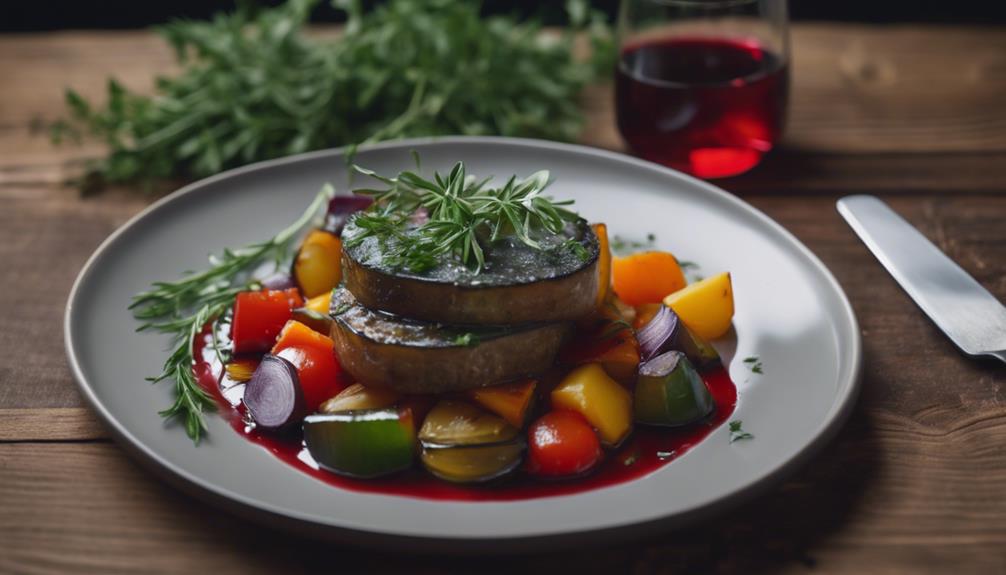
As you reflect on your sous vide ratatouille journey, consider how the flavors have melded together beautifully to create a harmonious dish. The slow cooking process of sous vide has allowed the vegetables to retain their individual tastes while blending into a delightful medley.
The tender zucchinis, vibrant bell peppers, and rich tomatoes have married their flavors to perfection, resulting in a ratatouille that's both comforting and nutritious.
When thinking about future recipe ideas, remember that ratatouille is a versatile dish that can be enjoyed in various ways. You could serve it over a bed of quinoa for a protein-packed meal, or alongside a piece of crusty whole-grain bread for a hearty lunch.
Experiment with different herbs and spices to tailor the flavors to your liking, or consider adding a protein source like chickpeas or tofu to make it even more satisfying.
Frequently Asked Questions
Can Ratatouille Be Made Ahead of Time and Reheated?
Yes, ratatouille can be made ahead of time and reheated for convenience. This dish reheats well on the stovetop or in the microwave. Reheating options preserve flavor and make meal prep a breeze, enhancing the convenience factor.
Is Ratatouille Suitable for Freezing?
Freezing ratatouille has benefits like preserving its flavors and saving time. To freeze it successfully, make sure it's completely cooled, use airtight containers, and label with dates. Enjoy the convenience of having a delicious meal ready to serve.
Can I Use a Slow Cooker Instead of Sous Vide for Ratatouille?
You can use a slow cooker as a convenient alternative for ratatouille. However, keep in mind that sous vide offers precise temperature control and enhanced flavors. Experiment with both methods to find what suits your preferences best.
What Is the Best Way to Store Leftover Ratatouille?
To keep leftover ratatouille fresh, store it in an airtight container in the fridge. When you're ready to enjoy it again, reheat gently on the stovetop or in the microwave, adding a splash of water if needed.
Can I Substitute Any Ingredients in the Ratatouille Recipe?
You can make ingredient substitutions in your ratatouille recipe to create unique flavor variations. Experiment with different veggies like zucchini, mushrooms, or bell peppers. Don't be afraid to get creative and tailor the dish to your preferences.
Conclusion
To sum up, sous vide ratatouille is a delicious and nutritious option for a classic Daniel Fast dinner.
With its origins in French cuisine and a variety of key ingredients, ratatouille can be easily customized to suit your taste preferences.
The sous vide cooking technique allows for precise temperature control and enhances the flavors of the vegetables.
Try out different variations of ratatouille to find your favorite combination of flavors and textures.
Enjoy this wholesome dish as a satisfying meal during your Daniel Fast.
